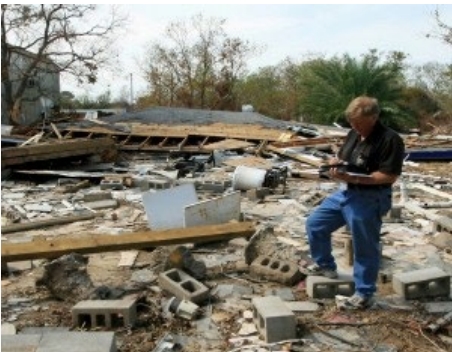May 1, 2025
BVI is now accepting applications for National Emergency Assistance (NEA) employment. NEA is the non-profit organization managed by BVI that conducts the FEMA work in support of TVA. The application process is open to all former and retired TVA employees, and former and retired Federal employees. This includes all branches of the US military.
If you wish to apply, please email a resume in Word (*.doc) or Adobe (*.pdf) format to NEA_Manager@tva.gov by May 23, 2025. Please title the email “NEA Employment.” Send any questions you may have to the same address.
If you have applied previously and were not selected, you must re-apply to be considered. BVI will
select individuals based on the resumes submitted. These candidates will be asked to complete a
computer proficiency assessment. Upon successful completion, candidates will be interviewed. A
class of NEA trainees will be selected from this group.
Applicants chosen for the class must pass a detailed background check for the security credentials
required by FEMA. This process can take six to nine months. Attendance at a two-week training
class will be required prior to deployment.
After training and adjudication, FEMA may accept only a small percentage of trainees per
deployment request. This means that new people may have to wait some time before getting an
opportunity to deploy.
Applicants should be willing to spend significant periods of time on the road away from home.
Typical deployments are a minimum of 120 days. Our current average deployment time for the
last few years is nine months.
The deadline for submitting resumes for the upcoming class is May 23, 2025.
Things You Should Know Before You Apply:
As many as 20% of the people we have trained ultimately elected not to accept deployment, though
everyone is eventually given the opportunity. While we do not want to discourage you from applying,
we want to be frank about the demands so that you’ll know what to expect. We want to minimize the
numbers that obtain the proper security clearances and receive the training, but do not choose to
deploy.
Our goal is that all candidates have a good understanding of this work before they apply, and that
– once trained – they carry through with deployment to a federal disaster. Here are some things you
should know:
- Before you can be deployed, you must go through an extensive Homeland Security – required badging process that includes the gathering of your work and personal history, a thorough background check, and submitting fingerprints.
- The full process takes 6-9 months. After two months, TVA may choose to offer an interim adjudication based on the results of a preliminary review.
- You cannot be deployed until the adjudication is received.
- You must have good computer skills.
- The successful completion of a computer proficient assessment is required before further consideration for employment.
- All work requires the use of a FEMA laptop computer. You will be writing reports and assembling data using Microsoft Excel, Microsoft Word, Adobe, and FEMA’s Grants Manager programs.
- You should be proficient in these programs.
- You will be using virtual interaction software like MS Teams and Zoom.
- Proficiency in these programs is expected as well.
- Your NEA time and NEA travel expenses will be developed and submitted for payment / reimbursement using the web or an app.
- You must be proficient with a Smartphone.
- FEMA will issue you a phone for use during the disaster, and you will be expected to use it for GPS readings, photographs, mapping, texting, and phone calls.
- Before you can be deployed, you must successfully complete an extensive two-week
Program Delivery Manager Course that includes a full week of computer-based training.- If you are not proficient with a laptop computer, you may have issues with the course and ultimately the disaster work.
- Computer skills are a MUST.
- We will be offering the PDMG class June 16th through June 27th.
- If you are unable to support this timeframe for training, this is not the time
for you to apply. - You cannot be deployed until you successfully complete the course.
- If you are unable to support this timeframe for training, this is not the time
- You must be detail oriented.
- Following directions well is critical.
- Having appropriate skills in communication, both written and verbal, are required.
- You are not entitled to be deployed nor to direct FEMA as to how things should be done.
- If you are not receptive to accepting the way FEMA wants to direct the personnel (including the
selection of those to deploy, the make-up of work teams, what equipment will be provided, the
expectations around OT, etc.) you will not be a good fit for NEA.
- If you are not receptive to accepting the way FEMA wants to direct the personnel (including the
- Your first deployment may take a while – In the past this has taken up to a year.
- However, due to the large demand from recent major disasters, wait times have shortened
considerably. - FEMA prefers experienced workers and often will not agree to accept many new
people unless that is their only option. Some of our trainees lose interest or find other work
before we can place them. We hope to minimize that but are constrained by FEMA’s
desires. We ask that you apply only if you think you can be flexible and wait for deployment.
- However, due to the large demand from recent major disasters, wait times have shortened
- Deployment is often not in a place that is pleasant.
- The area has been ravaged by some disaster, and conditions are not the best. Sometimes, as in the case of severe hurricanes, many motels in the vicinity of the assignment are damaged or filled with evacuees. You may be required to stay some distance away from the work site, or you may have to temporarily stay somewhere that is not the most desirable
- .Sometimes you may be working in an area with many FEMA workers, but other times you
may have a solitary assignment.- You may be asked to work for a period of time in an area
where you have no co-workers and no one to spend time with after-hours.
- You may be asked to work for a period of time in an area
- FEMA sometimes requires long workweeks.
- You may be required to work six 10-hour or even 12-hour days for weeks at a time. Or you may only be assigned 40 hours a week.
- Overtime hours are not guaranteed.
- Pay rates range from $54.17 – $67.99 per hour, depending on job classification, with time-and-a-half for all hours over 40 per week.
- Assignments are usually at least 120 days, but they can run substantially longer – if you are willing.
- For the sake of continuity, customer service, and production, FEMA prefers people stay through the completion of the disaster. This is often unpredictable and under FEMA’s control.
- While FEMA will pay your way home and back occasionally and give you several days off (with no pay) you may be required to work 6 to 8 weeks before being approved for a trip home.
- Many people find the work stimulating and rewarding, and 25% of BVI workers have worked numerous disasters over many years to accrue over 10,000 hours in the field. On the other hand, some people find the work depressing. It’s a matter of individual preference.
- You will likely be expected to explain, monitor, and enforce FEMA rules and regulations, as defined in manuals in which you will be trained. It will be your responsibility to calculate the mounts eligible for Federal (FEMA) reimbursement.
- Some FEMA applicants will likely not be happy with the answers that you will be obliged to give them.
Now that you know what to expect, please consider this information carefully before applying for
FEMA work.
If you are unsure about applying, it may be best to postpone. If you are selected for training and then change your mind before training begins, please call us. It is not unusual for us to fill unexpected vacancies the day before the training begins. It is much better for all concerned if you withdraw before training rather than after.
Current rules are that you must be a retired / former TVA employee or a retired/former Federal
employee to perform FEMA work with NEA.

